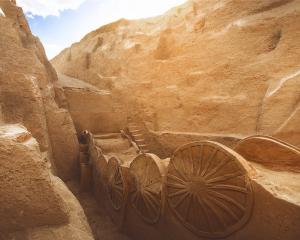The Shroud of Turin has been described as "the world’s most studied archaeological artefact".
It surfaced in the 1350s and, after several owners, ended up in Turin in 1578. In 1694, it was placed in the Royal Chapel of Turin Cathedral. From the first appearance, it has courted controversy. Does it, or does it not, bear the image of Jesus Christ, imprinted when it was used as a shroud for his body after the crucifixion? Its popular appeal is shown by the million faithful who flocked to Turin when it was put on public display in 2015.
However, from its first appearance, there have been those who denounce it as a forgery. In 1390, the Bishop of Troyes penned a memorandum to Pope Clement VI declaring that it came from "a clever sleight of hand" by someone "falsely declaring this was the actual shroud in which Jesus was enfolded in the tomb to attract the multitude so that money might cunningly be wrung from them". Matters came to a head in 1989, when the results of radiocarbon dates were published in the journal
Nature. The three leading laboratories in the world, with the approval of the Pope himself, were given permission to take samples of the linen cloth. Until then, dating technology necessitated too large a sample of fabric, but new techniques then made it possible to take a much smaller amount. Stringent steps were taken to ensure that dating was proof against all anticipated critics who waited in the wings. Three comparative samples of known age were included: a 12th century piece of linen from a Nubian tomb, an early 2nd century fragment from the tomb of Cleopatra of Thebes, and fabric from the cope of St Louis of Anjou, dating 1290-1310. The results from all three laboratories date the three test samples perfectly and the shroud itself to 1260-1390.
Of course, the faithful rose up as one with specious reasons why the dates were in error. Perhaps the shroud had been subjected to "invisible" repair with modern linen in the 14th century? Perhaps it was carbon monoxide that did it. The Cardinal Archbishop of Turin cited an overseas Masonic plot.
But now we have yet another study, coming from Brazilian Cicero Morares. An authority on imprinting fabric, his intensive modelling has concluded that the image of a man could only have come from a wooden or stone model, not a human body. It is, he concludes, a medieval forgery.
Will this stem the flow of pilgrims to Turin? Unlikely.














